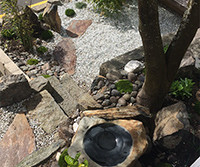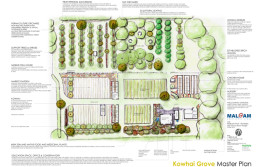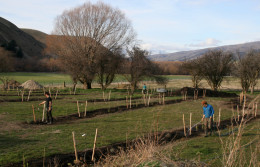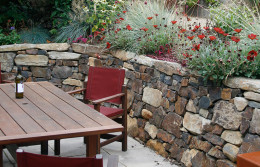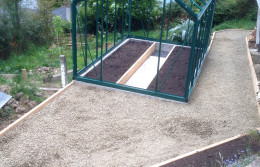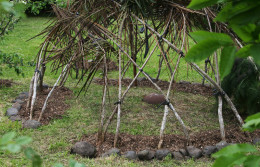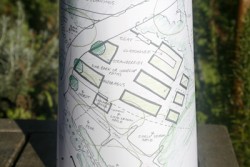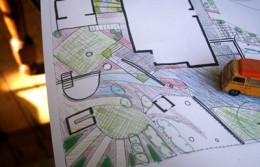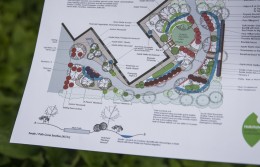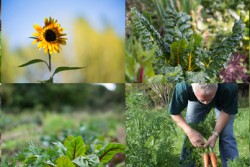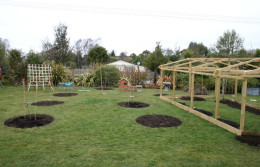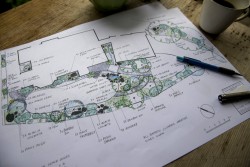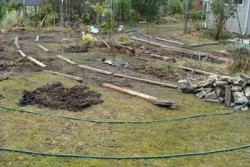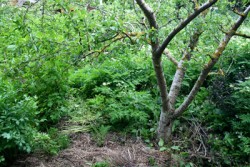We are planting a new orchard at Habitate Farm this winter – August 2014
The orchard utilises systems design based on beneficial features of natural woodland ecosystems, to create a productive orchard that produced its own fertility and is climate and pest resilient. It shares many features of food forest design but utilises structured pattern design for ease of management.
It will contain around 25 fruit trees and 20 companion trees and shrubs in an area of around 100m2.
The Layout is of four rows running north south.
Row 1 is a permanent raspberry row from which fruit and divisions will be harvested.
Row 2 is a mixed fruit tree row with support trees, shrubs and herbs
Row 3 is a row of support trees, shrubs and herbs which will be pruned for mulch and nitrogen release to the rows either side
Row 4 is a mixed fruit tree row with support trees, shrubs and herbs
The land is flat, silty river flats. Our climate is Coastal temperate where winters are mild and summers are cooled by coastal breezes. Our median summer air temperature is 14 C and our median winter air temperature is around 6 C. Our annual growing degree days (Base 10 C) are around 450. Median frost free period is 250 days. We receive around 900mm of rain fairly well spread throughout the year. So for fruit growing our limiting factor is summer heat. Our best crops come from temperate berries, apples (a huge diversity of), pears and plums.
The layout and permaculture systems design for this orchard are experimental but have strong and diverse production goals – it has to be viable as a prodcutive element of our farm.
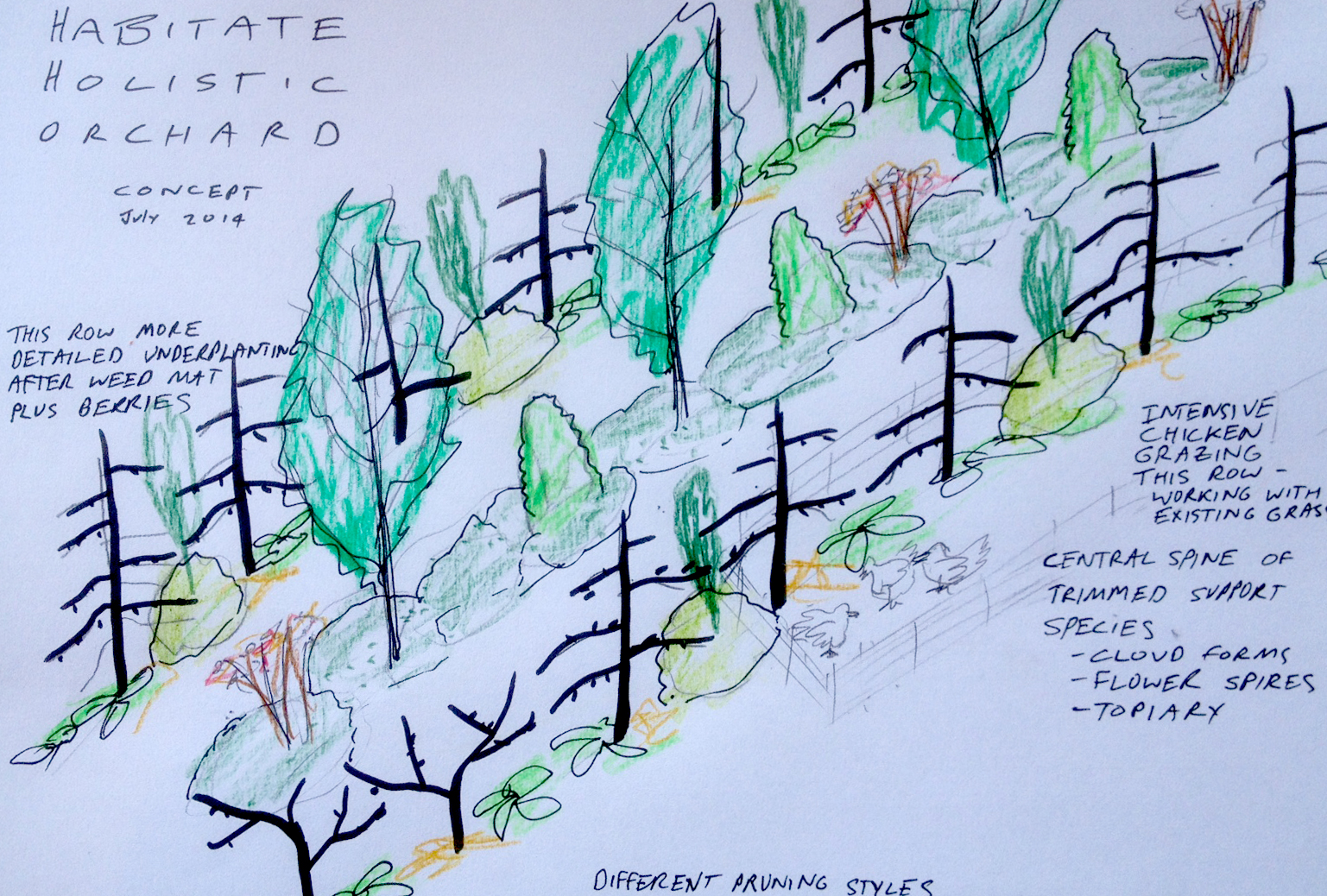
The orchard aims to:
- Produce a range of certified organic fruit for gate and direct sales – it must be quick to crop
- Trial 25+ new varieties (credit to Kristina Hill for variety suggestions and trees). Trialling of: fruit tastiness, disease resistance and suitability to climate. The best of these will find their way into the Habitate – Heritage Fruits Nursery Catalogue and into our local Permaculture Landscape Designs
- Trial fruit tree training techniques, where branches are trained down to horizontal from the beginning, to induce fruiting. One of which will be the commercial orchard techniques used by Stefan Sobkowiak in his film: The Permaculture Orchard : Beyond Organic http://www.permacultureorchard.com/en/the-film/
- A percentage of the trees (possibly every second tree to leave a 4m in row spacing) may be sold and transplanted as 3-5 year old trees, to create space or if our lease on the land ends
- Produce eggs through the rotation of a chicken flock through the orchard – the chickens are an essential part of the maintenance and fertility system of the orchard.
- Trial two methods of orchard establishment (see below)
- Experiment with the question of whether the orchard can produce its own woody organic matter for feeding the silty soil of the site, by planting a central spine of mulch trees within the orchard.
- The design and layout is to enhance the landscape of Habitate farm, the Holistic Orchard will form an edible woodland edge to the intensive organic market garden. Providing a weed barrier and beneficial insect habitat.
Establishment and Management Systems Design
- The management design of the orchard is entwined with aesthetic goals. For example: The supporting nitrogen fixing shrubs and trees planted with the orchard for mulch material and to release nitrogen and carbon via their root systems, will be trimmed, coppiced and pollarded to achieve this. This pruning maintenance is an opportunity to utilise and reference appropriate garden styles to add to the aesthetic appeal of the orchard. I am inspired by English cloud pruned hedges and the clipped shrubs of both Japanese and rural Italian gardens.
- Two orchard establishment techniques are being employed side by side:
- Rows 1 and 2 will be established using weedmat to kill off the existing grass for the first year and will then be planted with a greater degree and diversity of herbaceous support species.
- Rows 3 and 4 will be established with the existing grass sward intact, by planting the crop trees, and the support species into circles of grubbed off grass and then by using a rotation of chicken grazing and rough mulching of weeds and prunings, and seed scattering to convert the ecosystem to dominate the grass and create a woodland type soil ecology.
Species
Cropping: Raspberries, Apples, Pears, Peaches
Support / Mulch Trees: Alder (Alnus cordata), Tree Medic, Elderberry
Support / Mulch Shrubs: Elaeagnus ebbingii
Support / Mulch Herbs: Comfrey (Symphytum x Uplandicum and S. Ibericum), Cardoon, Sweet Cicely, Lovage, Feverfew, Nasturtium
Want to get involved? We will have further work days on the orchard as it evolves.
Orchard Planting day – 13/8/14
We had some cold South West winds but the day warmed up to allow us to eat lunch outside on the cottage deck.
There was a lot of great discussion and inputs of ideas to the orchard also.
Habitate Farm is an opportunity to have a go at putting into action all of our visions of rich living soils and diverse integrated plantings.
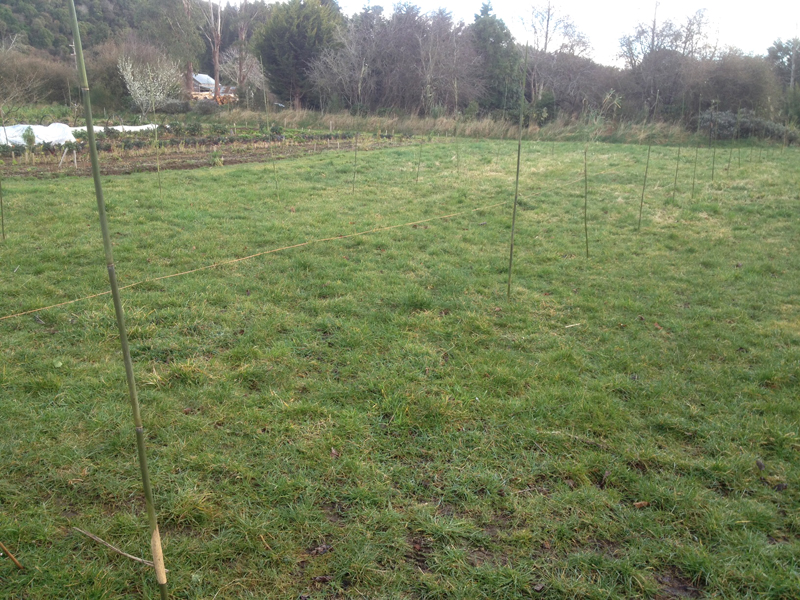
Marking out the two meter spacing for the fruit trees, to the left is the organic market garden
Twelve of us planted 22 fruit trees, 8 raspberry shrubs, 22 support species trees and shrubs, 39 chunky Russian Comfrey divisions, and 39 Dwarf Comfrey plants. And had a long and delicious lunch!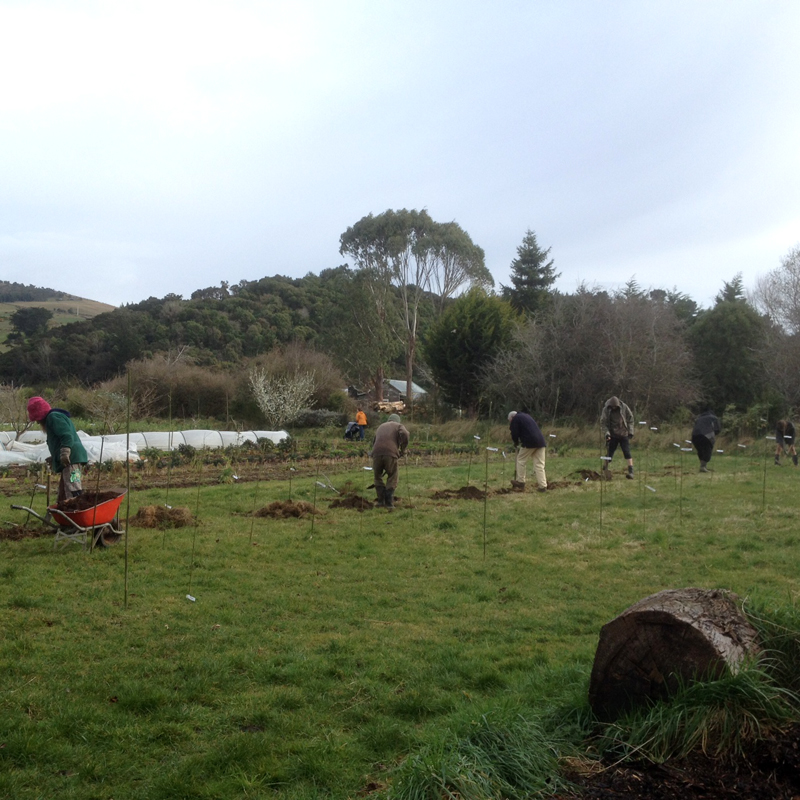
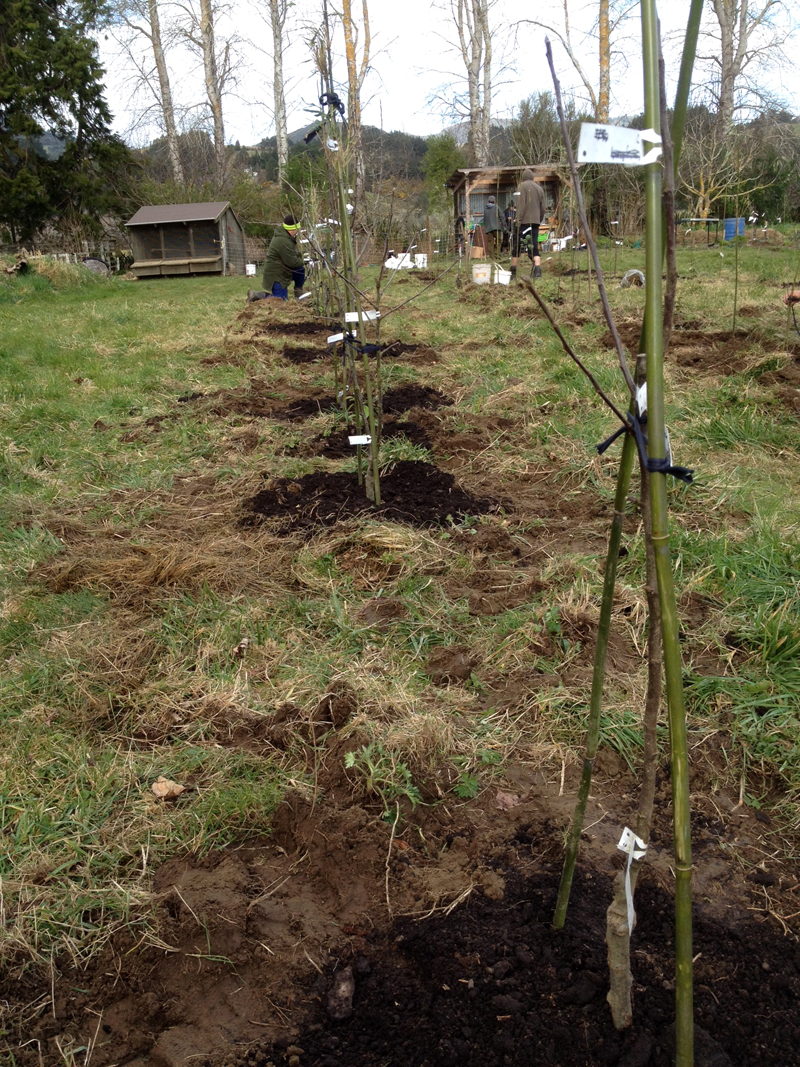
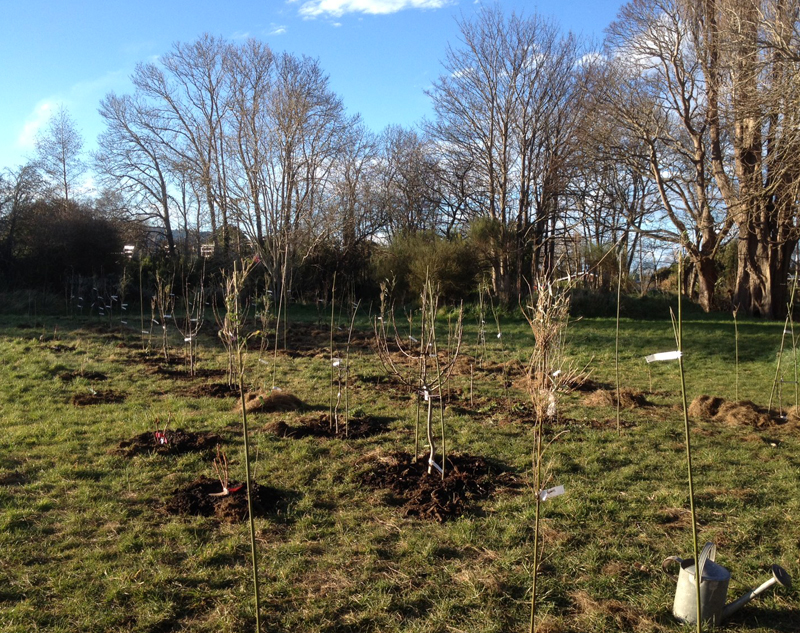
The low end of day sun blesses the new orchard. We also had beautiful little pure black Piwakawaka flitting around us during the planting. I think the birds are going to appreciate this orchard too.
